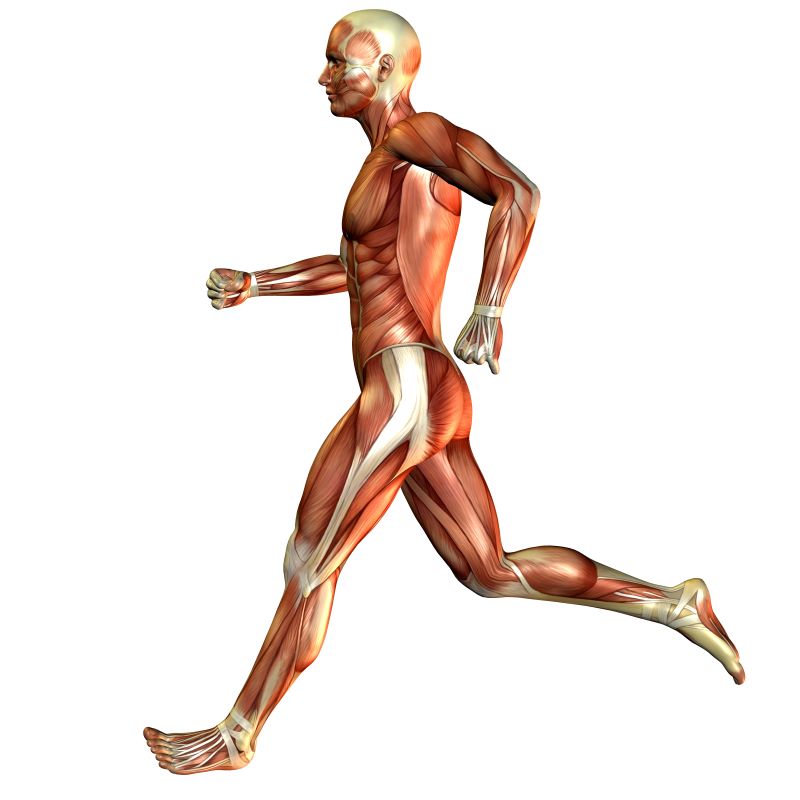New research from the RVC explores the functions of leg muscles and structures in running
Research from the Royal Veterinary College (RVC) has explored the functions of leg muscles, structures and mechanisms in running, finding parallels with bicycle wheels that support body weight, and pedals and gears that enable the muscles to work effectively. These findings answer long-standing questions about how and why different muscles pull at different times, and why they are effective despite pulling against each other.

The human body is very capable of running, not least displayed in the current Athletics at the Paris Olympics 2024. While the actions of the major human leg muscles are well understood, the functions of these muscle actions during steady running remain unclear.
Through modelling the movement of the human leg, using a combination of geometry, physics and biology, James Usherwood, Professor of Locomotor Biomechanics at the RVC, explored the two distinct roles that leg muscles have during running.
The first is to support the body as it moves forward without requiring too much effort – the same job as a rolling bicycle wheel. This is achieved by a series of muscles that resist changing length as they support the body as it moves horizontally – like the spokes of a bicycle wheel.
The second role of the leg muscles when running is to work as efficiently as possible. This is performed by the hamstrings as they shorten, providing power throughout the stance, without disrupting the first role. This is similar to how bicycle pedals and gears function as it enables human leg muscles to work effectively by giving time for the muscles to contract and produce mechanical work. The importance of this can be compared to trying to pedal fast downhill in first gear.
Leg design, joint and muscle action in human running can therefore be viewed as a sequence of geometrically engaged and disengaged linkages, performing the two different functions simultaneously within the same leg, but with different muscle actions, without compromising each other. These findings have been published in the journal, Biology Letters.
James Usherwood, Professor of Locomotor Biomechanics at the RVC, said:
“We have known for a long time, but largely ignored, the fact that our bodies effectively ‘slide’ over our feet when we sprint. Working out how this sliding is achieved with our muscles through really simple changes in geometry, and how muscle power can be put in at the same time without messing up this geometry, reveals a great deal about why our muscles are arranged as they are, and pull (or are pulled) in the sequence we see.”
Notes to Editors
Reference
Usherwood, J.R. (2024). The functions of leg muscles, structures and mechanisms in running. Biology Letters 20: 20240260. https://doi.org/10.1098/rsbl.2024.0260
For more information on the study, please visit: https://jimusherwoodresearch.com/human-running/
The link for the paper once the embargo lifts will be: https://doi.org/10.1098/rsbl.2024.0260
For media enquiries, please contact:
- Jasmin De Vivo – devivo@plmr.co.uk or rvc@plmr.co.uk
- Press Line: 0800 368 9520
About the RVC
- The Royal Veterinary College (RVC) is the UK's largest and longest established independent veterinary school and is a Member Institution of the University of London.
- It is one of the few veterinary schools in the world that hold accreditations from the RCVS in the UK (with reciprocal recognition from the AVBC for Australasia, the VCI for Ireland and the SAVC for South Africa), the EAEVE in the EU, and the AVMA in the USA and Canada.
- The RVC is ranked as the top veterinary school in the world in the QS World University Rankings by subject, 2024.
- The RVC offers undergraduate and postgraduate programmes in veterinary medicine, veterinary nursing and biological sciences.
- The RVC is a research-led institution, with 88% of its research rated as internationally excellent or world class in the Research Excellence Framework 2021.
- The RVC provides animal owners and the veterinary profession with access to expert veterinary care and advice through its teaching hospitals and first opinion practices in London and Hertfordshire.
You may also be interested in:
-
New research from the RVC explores the functions of leg muscles and structures in running
Research from the Royal Veterinary College (RVC) has explored the functions of leg muscles, …

